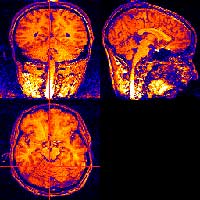 In a significant step towards connecting human thoughts with machines, Japanese automaker Honda has announced the development of a technique that uses brain signals to control simple movements of robots, known as the “brain-machine interface.”
In a significant step towards connecting human thoughts with machines, Japanese automaker Honda has announced the development of a technique that uses brain signals to control simple movements of robots, known as the “brain-machine interface.”
In the future, the technique developed by Honda in collaboration with the ATR Computational Neuroscience Laboratories may replace keyboards or mobile phones, according to researchers on May 24. This technology could also benefit individuals with spinal cord injuries.
During a video presentation in Tokyo, brain signals detected by an MRI machine were transmitted to a robotic hand. A participant in the MRI clenched their fist, spread their fingers, and then made a “V” sign. Seconds later, a robotic arm mimicked these gestures. However, further research is needed to decode more complex movements.
What Honda refers to as the “brain-machine interface” represents an advancement over previous methods that required surgical connections with wires. Other methods still necessitate training individuals to send brain signals or are not very accurate in reading these signals.
Honda stated that this latest research is not only crucial for the development of the company’s Asimo robot’s intelligence but also for future automation technology. Asimo can talk, walk, and dance. While currently available for rent, it plays a significant role in Honda’s branding. It will take at least five more years before Asimo can move according to the commands from its owner’s thoughts.
Currently, Asimo’s metallic hand cannot even form a “V” sign.
K.NHAT

















































